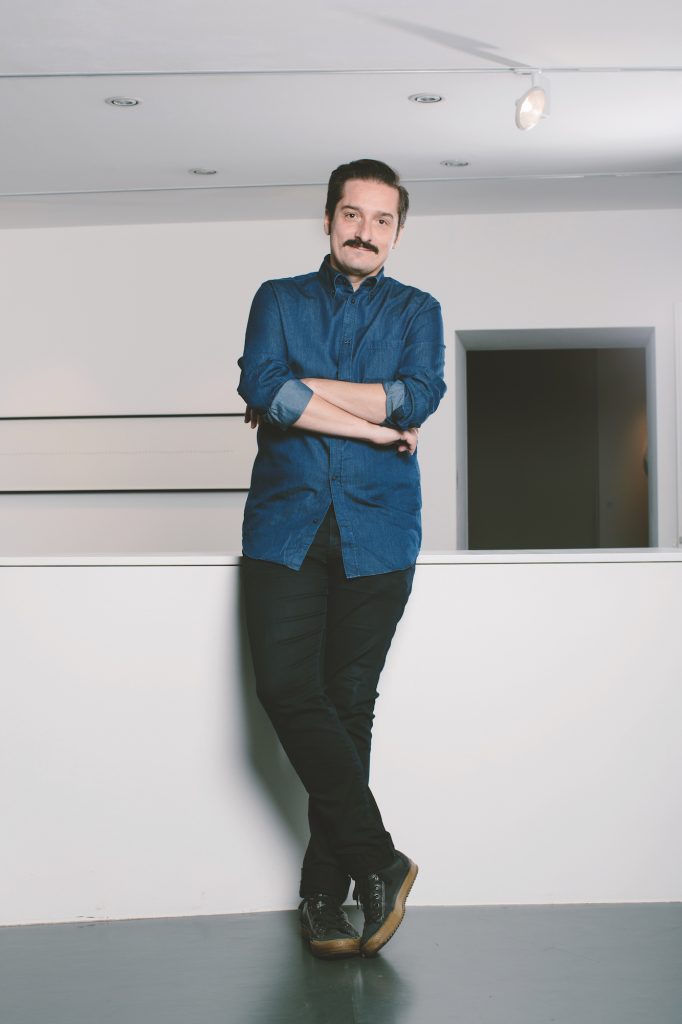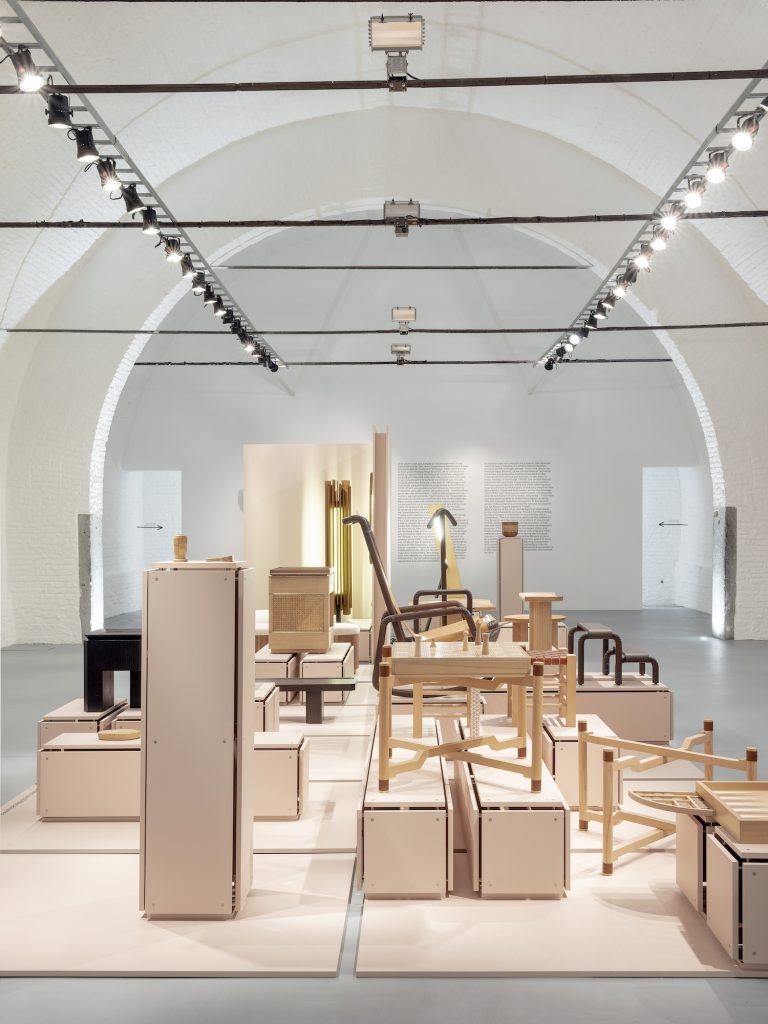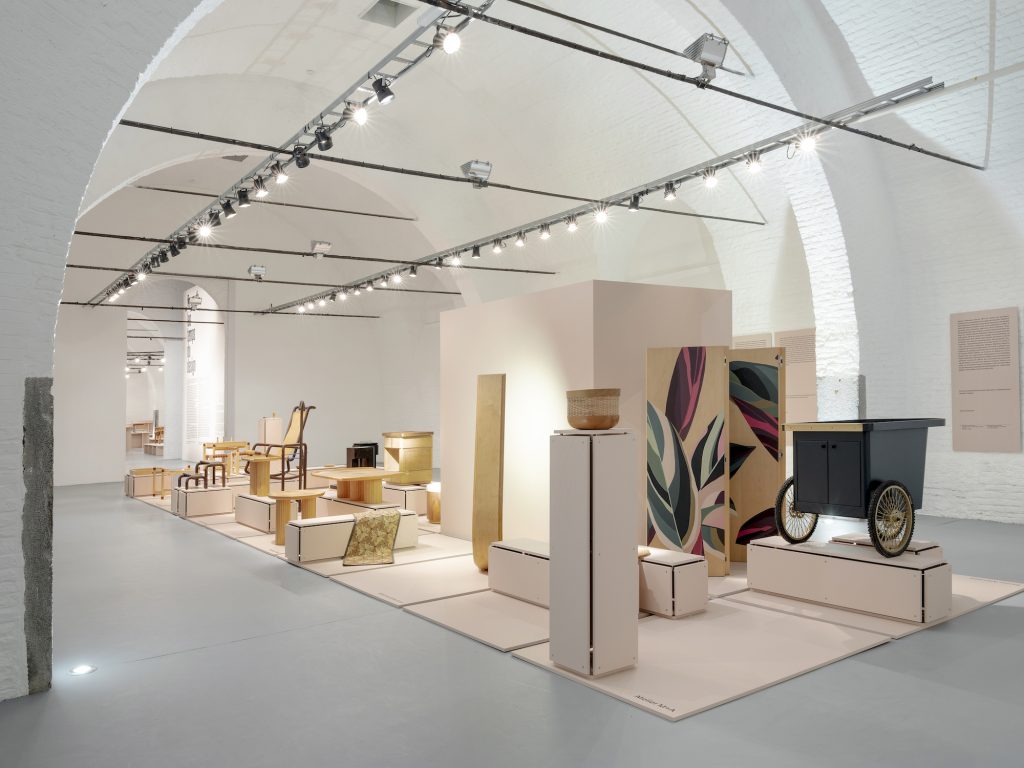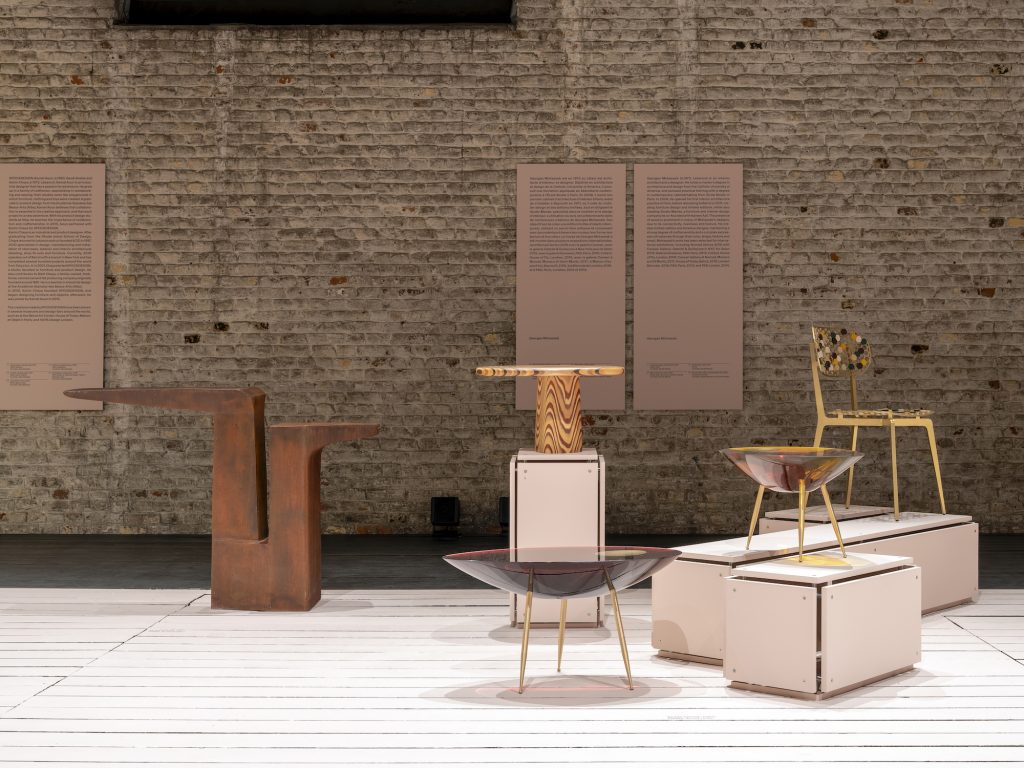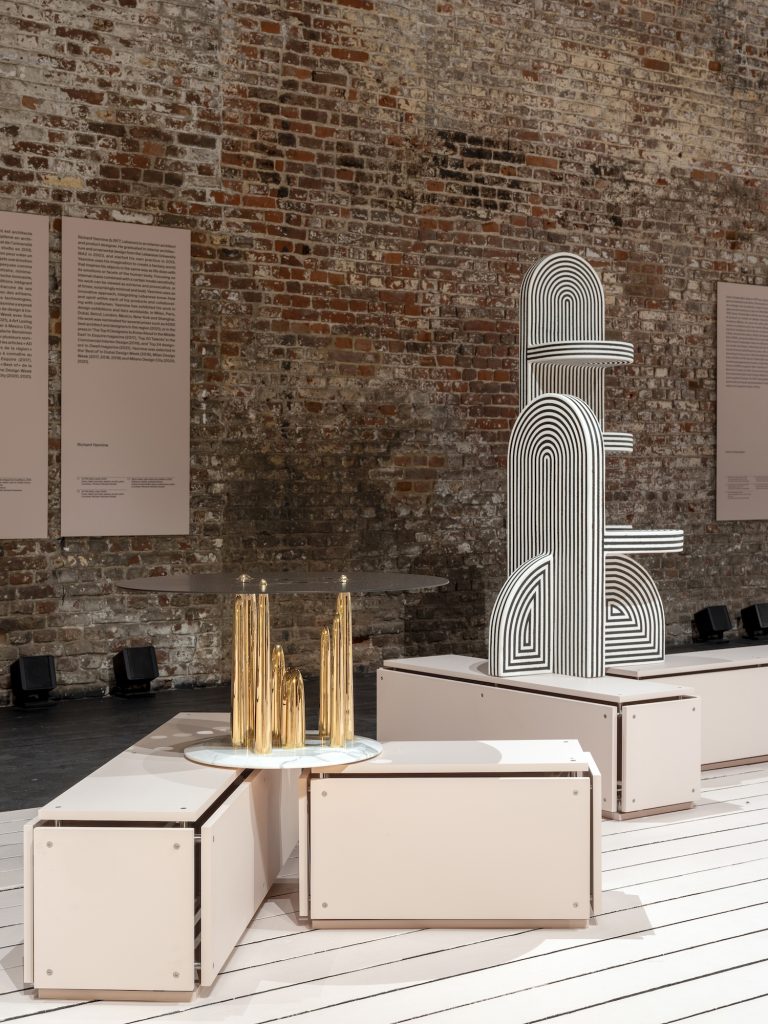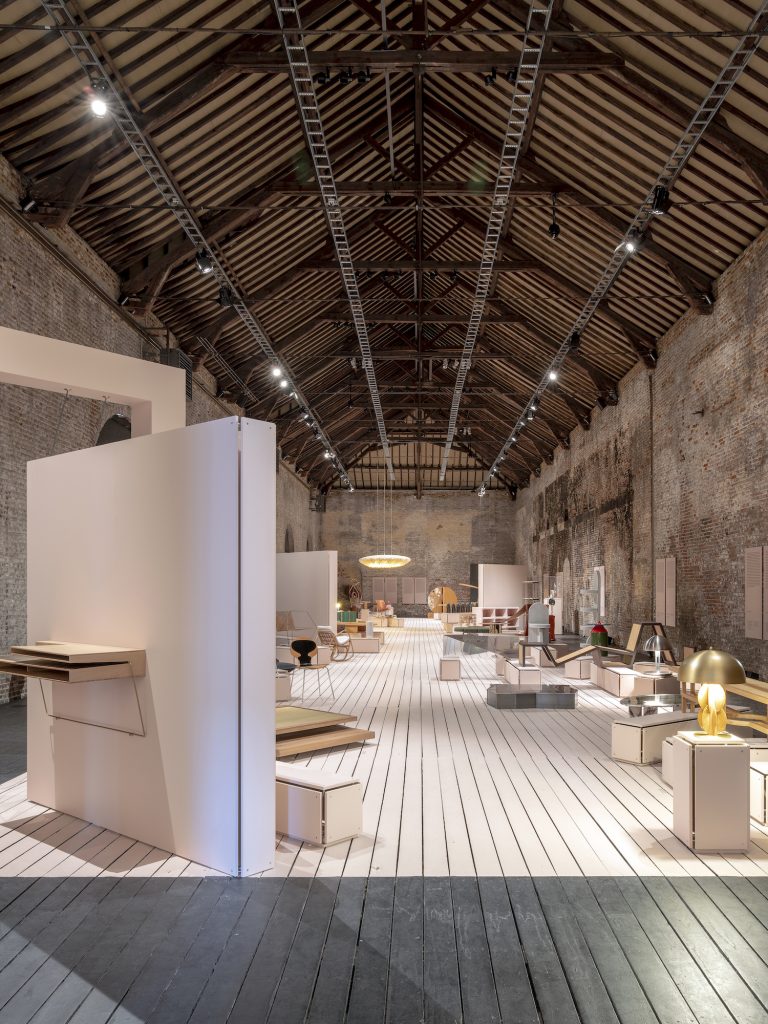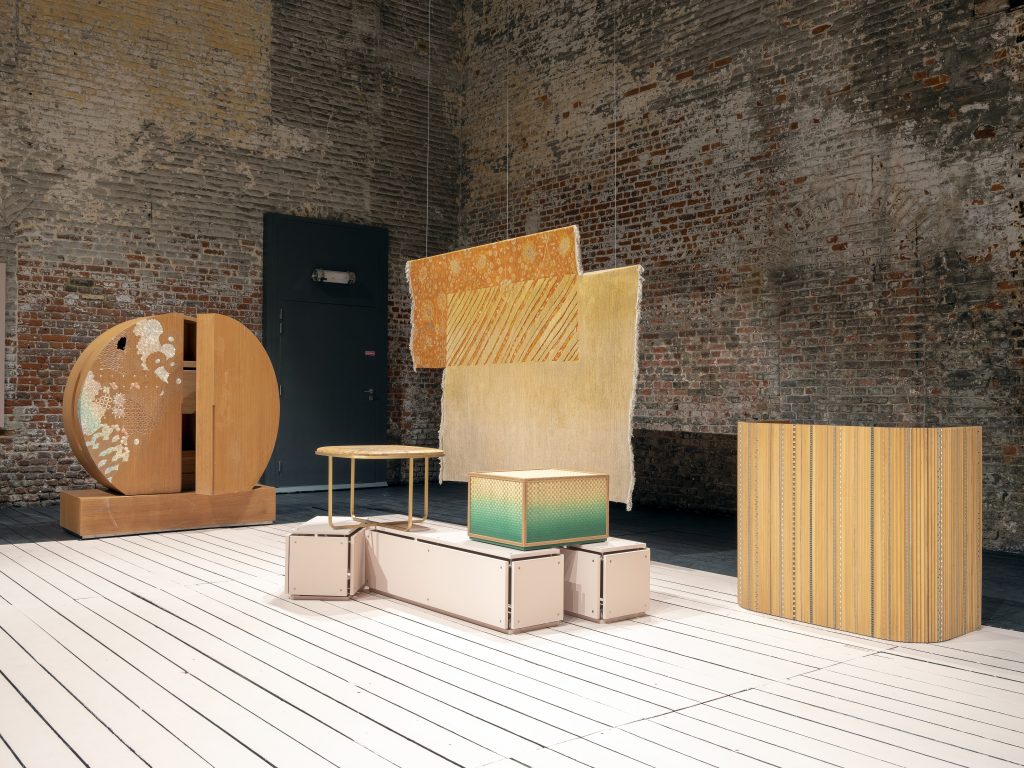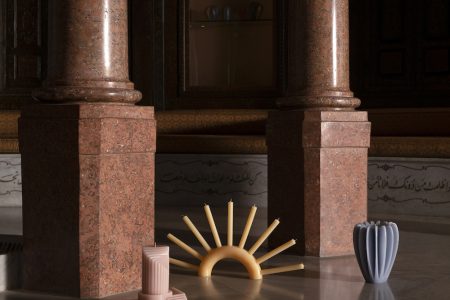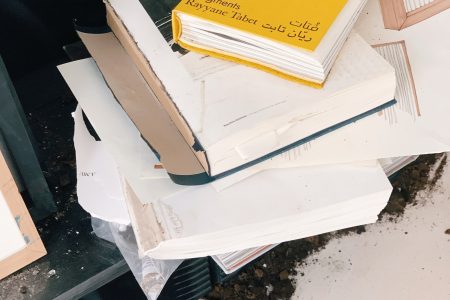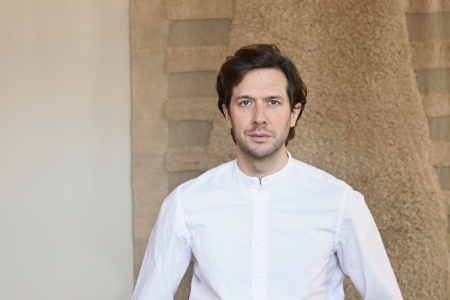Beirut: The Eras of Design
An unique exhibition that shines a light on Lebanon’s design history as well as its contemporary creative scene is now on view at the CID Grand Hornu.
Marco Costantini, Curator and Adjoint Director at the Mudac in Lausanne, talks to TLmag about the exhibition, “Beirut: The Eras of Design”, which looks at the design scene in Lebanon from 1943-present, as well as current, on-the-ground projects which are working to sustain the country’s craft traditions. The exhibition is on view at the CID Grand Hornu through August 14, 2022.
TLmag: Tell us a bit about this new exhibition “Beirut: The Eras of Design”. What can viewers expect to see?
Marco Costantini: The exhibition “Beirut: The Eras of Design” tries to understand what it means to create and produce design in Lebanon today, while looking back at the past to better understand the context and history of design development in Lebanon.
In a situation of exceptional crisis, such as Lebanon is experiencing today, producing design is an act of solidarity and combativity. It allows a whole ecosystem of craftsmen to continue to help preserve an intangible heritage, the savoir-faire, and to demonstrate to the political class that despite the pitfalls, some Lebanese want to stay in the country even if it becomes more and more difficult.
The exhibition looks at some of the reasons why Lebanon has had such a strong history of design – from its unique location between East and West, its long-standing cultural relationships with Europe, particularly with France, but also with the Emirates, all of which added to the originality of the design scene in the country.
The exhibition was also an opportunity to study design history in Lebanon, from the country’s independence in 1943 to the present day. Unfortunately, much of this history remains incomplete due to the disappearance of whole sections of archives during and after the civil war. At the Grand Hornu, viewers will have the opportunity to discover through three chapters, different aspects of this history through objects but also rare and unpublished documents presented for the first time to the public.
TLmag: Would you talk about 1 or 2 pieces in the exhibition that particularly connected with you personally?
M.C.: This is not an easy question as I wouldn’t want to rule out any designer and many of the objects resonated with me as all have strong stories that led to their creation. But if I have to choose two works, I would first say, Silver City Mar Mikhael (2017) by Carlo Massoud. It is a jewellery holder that takes the form of a model of the Mar Mikhael neighbourhood in Beirut. Each ring, pendant or brooch sits on top of it and takes the shape of a satellite dish, a staircase or birds on an electric wire. It’s a clever and funny piece at the same time. After the explosion of the Beirut harbour on August 4, 2020, this piece became for me a kind of relic, as the neighbourhood represented was one of the most devastated. Another iconic piece for me is probably this small wooden side table by Georges Mohasseb, titled, Distortion (2017). It beautifully illustrates the great interest of Lebanese designers in preserving skills and mastering ancestral gestures. Here, layers of wood of different species are glued together and end up giving the impression that they are the rings of an unknown species. Beautifully handcrafted by Mohasseb himself, it overwhelms me every time I see it.
TLmag: How did you come to curate this show for the CID Grand Hornu?
M.C.: I talked to Marie Pok about the idea at a symposium in Helsinki. She immediately agreed to the project, having just returned from a trip to Lebanon and having seen the dynamism of its creative scene. It took six years from this discussion and the opening, to make the exhibition a reality.
TLmag: In a city such as Beirut that has suffered numerous wars, economic struggles and then, the devastating explosion in August 2020, how does design play a role there today? How do they have a voice in rebuilding and sustaining this city?
M.C.: Lebanon has suffered, and still suffers, from its stubborn dependence on clichés (immortal Phoenicians, Switzerland of the Middle East) and from its image of a cursed country (civil war between 1975 and 1990, long-lasting economic and political crisis, explosion of the port on August 4, 2020, …). Beirut, and Lebanon through it, has always shown throughout its history a vital momentum demonstrating its desire to live stronger than anything. Tomorrow is always today. But once again, this memento vivere should not be confused with a simple spirit of resilience. The weariness and exhaustion are there, the departures towards an easier elsewhere too. The hopes of reconstruction that followed the civil war projected an illusion of stability that only masked a programmed collapse. The artificial constancy of bank interest rates also contributed to the collapse of the system. The Thawra, in the Fall of 2019, was the most salient expression of a desire for profound change that could take the population out of this quasi-governmental hostage situation. We will also see where the May 2022 elections will lead. It is in this situation, full of paradoxes, a design scene developed rapidly since 2000, and was quickly hailed by design critics, fairs and others. This led to a flourishing of galleries, dealers, fairs, and collectors. But recently, galleries and fairs specialised in design have closed and these are essential links that are now missing.
TLmag: What are a couple of Beirut’s heritage crafts which are being practiced by contemporary designers in innovative ways?
M.C.: Many skills are preserved today thanks to the demand of designers who wish to introduce these ancestral practices in their work. And while many designers have left the country in the last two years, they continue to call upon these craftsmen. A project is currently underway to list the craftsmen and traditional savoir-faire of Lebanon. This project, The Ready Hands, directed by Zeina Raphaël and Pascale Habis, aims to reference and document all the arts and crafts practiced across Lebanon. The designers who use these crafts today are innovative not only in the way they question the limits of these practices but also in the aesthetics they choose, which often differ greatly from the more traditional ones practiced by the craftsmen. Demonstrating to the artisans that the demand is oriented towards more contemporary forms is also a way for the artisans to innovate.
TLmag: What is the Minjara Project?
It is a project that takes place in the north of Lebanon, in Tripoli, which has a history of
furniture making that dates back to the mid-nineteenth century. For more than a century, this furniture industry was an important means of livelihood for most of the city’s residents. The civil war once again put a stop to this, followed by cheap imports, which further weakened an already ailing economy. UNIDO piloted a program between 2013 and 2015 that provided technical assistance to the Ministry of Industry in four areas: improving food security, supporting the development of the agribusiness sector, optimizing the use of resources and promoting creative industries. Two major zones were created to implement this program. The first one grouped jewellery companies in Bourj Hammoud, the second one focused on the furniture industry and was based in Tripoli.
Through this, the Private Sector Development (PSD) program, funded by the European Union and implemented by Expertise France with local and international partners, are working on reviving the furniture industry in Tripoli by developing the Minjara project.
This platform provides a place to work and interact with carpenters, designers and professionals. It assists carpenters in terms of orientation, education, training and governance. It also assists in the marketing of products. Today, however, this project, which was artistically led by Hala Mubarak at its inception, has slowed down and I hope it can resume.
@cidgrandhornu
@thereadyhands
